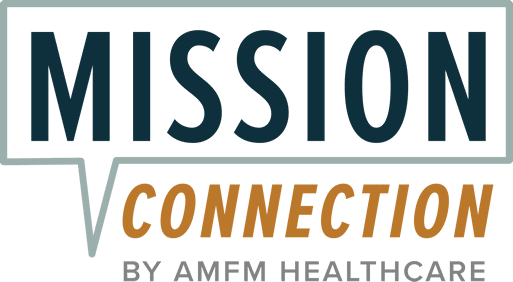Hypomania Symptoms in Adults: Signs, Causes, and Treatment Options

It represents a period of unusually elevated mood, increased energy, and heightened activity that feels invigorating at first but can quickly become disruptive.
If hypomania is affecting your day-to-day life, a mental health professional can provide support and guidance on how to manage it. This page can also help you understand bipolar disorder hypomania signs, as it explores:
What hypomania is- The mental health conditions that include hypomania
- How to recognize hypomania symptoms
- Why hypomania happens
- Triggers for hypomanic episodes
- Ways of coping with hypomania and treatment options
- Answers to frequently asked questions on hypomania

What Exactly Is Hypomania?
According to guidelines, the change must be a clear difference from a person’s usual behavior and should be noticeable to others.2
Hypomania should also not lead to significant disruption in social or work life, require hospitalization, or involve psychotic features (like hallucinations or delusions). If these more serious symptoms appear, the episode is considered mania, not hypomania.
The symptoms also cannot be explained by excessive alcohol intake, drug use, medications, or a medical condition.
Difference Between Hypomania and Mania
Hypomania and mania share the same core symptoms, but they differ in severity and duration. A hypomanic episode lasts at least four consecutive days, while a manic episode lasts a minimum of seven days.
People experiencing hypomania can continue their day-to-day lives in most cases, while mania typically causes severe problems in work, relationships, and daily functioning.
The most important distinction between mania and hypomania is that mania includes psychotic symptoms (like delusions or hallucinations) so extreme that they require hospital care. Hypomania, by contrast, does not include psychosis and is not severe enough to warrant hospitalization.3
Which Mental Health Diagnoses Include Hypomania?
Bipolar II disorder, in which a person experiences at least one major depressive episode and at least one hypomanic episode, but never a full manic episode. Those who have bipolar II disorder spend more time in depression than in hypomania.- Bipolar I disorder, which requires at least one manic episode for diagnosis. People with bipolar I may also experience hypomanic episodes between or after manic episodes, but mania is the defining feature.
- Cyclothymic disorder (or cyclothymia), which includes at least two years (or one year for children) of fluctuating mood swings. These swings include hypomanic symptoms and depressive symptoms, neither of which meet the full criteria for hypomanic or depressive episodes.
- Other specified or unspecified bipolar and related disorders. These describe people who have clear bipolar-type symptoms, such as brief hypomanic episodes, but who don’t fit into any specific bipolar diagnoses.
Recognizing the Signs and Symptoms of Hypomania
A distinct, sustained change in mood and energy where you feel unusually upbeat and your activity level is clearly higher than it would be typically- Inflated self-esteem or grandiosity
- Decreased need for sleep
- Increased talkativeness or pressured speech
- Racing thoughts, also known as “flights of ideas.” For instance, your thoughts might jump quickly from one idea to another
- Attention being pulled away by small, irrelevant things
- Excessive involvement in risky activities like impulsive spending, sexual indiscretions, reckless driving, or risky business decisions
- Increase in sexual drive or behavior, as in putting new or intense demands on a partner, showing sexual interest in people you normally wouldn’t approach, starting an affair, pornography, online sex, or sex work
- Symptoms being present most of the day, nearly every day, for at least four consecutive days
- Behavioral changes that are observable by others
- An absence of psychosis, and no hospitalization being needed
Why Does Hypomania Happen?
The brain’s reward system, which includes dopamine signaling between the ventral tegmental area (VTA), the ventral striatum (nucleus accumbens), also becomes more active during hypomanic episodes. This is why people feel euphoric and more energetic.6
The brain area that plans, regulates emotion, inhibits impulses, and sustains attention also shows altered activity in bipolar illness. These changes lead to a more rapid speech, distractibility, poor judgment, and impulsive choices despite awareness of potential harm.
Finally, the body’s circadian system strongly regulates mood. In people vulnerable to bipolar spectrum illness, sleep loss or circadian disruption (from things like jet lag, shift work, or irregular schedules) can cause hypomanic episodes.7
Common Triggers for Hypomanic Episodes
Here are some of these risk factors:
Poor sleep or a sudden change in sleep schedule can trigger hypomania. In a large survey of over 3,000 people with bipolar disorder, about 20% reported that sleep loss had precipitated mania or hypomania.8- Stressful life events such as relationship breakups, bereavement, or major work changes can precede the relapse in bipolar disorder. In a clinical study of relapsed patients, 70% had experienced a stressful life event in the pre-onset period of their manic and hypomanic symptoms.9
- Substance use commonly co-occurs with bipolar illness and worsens its course. Increases in alcohol use have been associated with worsened manic/hypomanic symptoms.
- Antidepressant treatment, like escitalopram, when given without a mood stabilizer in someone with bipolar disorder, can provoke a switch to hypomania or mania.
- Bipolar-spectrum conditions are strongly heritable. Having a first-degree relative with bipolar disorder raises the likelihood that hypomanic symptoms reflect a bipolar pattern rather than purely situational mood changes.
How Mental Health Professionals Identify Hypomania
Hypomania can look different from person to person, so healthcare professionals take time to look carefully at all possible explanations before giving a formal diagnosis.
For instance, your healthcare provider will have a thorough conversation with you about your health. In this conversation, they’ll likely ask about:
- The severity, duration, and impact of your symptoms on your life.
- Your medical history.
- Your family’s mental health history.
- Any current medications, supplements, or herbal remedies you take.
These questions help them rule out other possible causes of elevated mood. For instance, hyperthyroidism (an overactive thyroid) can mimic the symptoms of mania or hypomania. Your provider may order blood tests or even imaging scans to rule it out.
If nothing medical seems to explain your symptoms, they’ll refer you to a mental health specialist for a more detailed assessment.
A mental health professional uses standardized criteria to determine whether a person meets the definition of a hypomanic episode. These criteria include whether…
- Your symptoms have lasted for at least four consecutive days and are present most of the day, nearly every day.
- During this time, you have experienced three or more hypomanic symptoms (such as decreased need for sleep, increased talkativeness, racing thoughts, or impulsive behavior).
- Your symptoms have not caused severe impairment in social or work life.
- The episode does not involve psychotic symptoms like delusions or hallucinations.
- The symptoms cannot be better explained by the effects of substances (such as medications, alcohol, or recreational drugs) or by another medical condition.
Treatment Options for Managing Hypomania
Hypomania occurs within the bipolar spectrum, for which there are plenty of evidence-based treatments. These include:
Medication Management
Medication is the foundation of treatment for bipolar spectrum conditions.Mood stabilizers like lithium, valproate (Depakote), and lamotrigine (Lamictal) are first-line treatments for hypomania. Lithium, in particular, has robust evidence for long-term relapse prevention. It also reduces the risk of suicide in bipolar disorder.12
Atypical antipsychotics such as quetiapine (Seroquel), olanzapine (Zyprexa), aripiprazole (Abilify), and lurasidone (Latuda) can also be used to manage hypomanic symptoms.
Antidepressants are used alongside a mood stabilizer for depressive phases in bipolar disorder. If used without a mood stabilizer, they can trigger a hypomanic episode.
In some cases, your doctor may prescribe medications for related issues, like anti-anxiety medications for temporary relief of agitation or insomnia.
Therapy and Psychosocial Support
Therapy addresses the human side of living with hypomanic mood shifts, which includes your thoughts, routines, relationships, and coping tools.
Cognitive behavioral therapy (CBT) teaches you to recognize early warning signs of hypomania and develop skills to slow down. It has been shown in research to significantly reduce relapse rates.13
Interpersonal and social rhythm therapy (IPSRT) stabilizes your daily routines, such as sleep, meals, social contact, and activity levels. Disrupted circadian rhythms can trigger hypomanic episodes, and IPSRT is helpful for maintaining consistent routines.
Bipolar symptoms can also affect your loved ones. Family-focused therapy involves your family in therapy to improve communication and teaches everyone to spot early warning signs.
Self-Management Strategies for Coping With Hypomania
Although self-care can not replace treatment, it can complement it to improve your stability. Try the following habits for better therapy outcomes:
- Maintain a regular sleep schedule: Sleep loss is one of the strongest triggers for hypomania. Going to bed and waking up at consistent times helps regulate your body clock.
- Track your mood and energy: Apps or mood journals can help you learn what your triggers are. For example, how caffeine, stress, or late nights affect your mood, so you can act accordingly.
- Limit alcohol and stimulants: Substances destabilize mood and reduce the effectiveness of medications.
- Build a calming routine: Meditation, gentle exercise, art, or time in nature can protect your nervous system from constant overstimulation.
- Plan for high-energy days: When you start feeling hypomanic symptoms kicking in, try to slow your pace and check in with someone you trust. Make sure to never make any big decisions during this time.
Get Help for Hypomania at Mission Connection Healthcare
If you or someone you love is experiencing symptoms of hypomania, consider reaching out for professional help.
At Mission Connection Healthcare, we specialize in providing compassionate, evidence-based care for people living with bipolar spectrum conditions, including hypomania.
Our team of mental health specialists creates personalized treatment plans for all patients. Our programs integrate proven, research-backed strategies such as cognitive behavioral therapy, mood stabilization, and psychoeducation.
We also accept all major insurance plans to ensure you access the help you need without unnecessary financial stress. Get in touch with our team today.

Frequently Asked Questions About Hypomania Symptoms
How Long Does an Episode of Hypomania Last? A hypomanic episode should last for at least four consecutive days, according to the diagnostic criteria.2 In reality, most episodes last from a few days to several weeks.
Can Hypomania Cause Psychosis?
No, hypomania does not cause psychosis. By definition, hypomanic episodes do not include hallucinations or delusions. If such psychotic symptoms appear, the episode is classified as mania, not hypomania.2
Is Hospitalization Needed for Hypomania?
Hospitalization is not usually required for hypomania. By definition, hypomanic episodes do not cause severe impairment in social or occupational functioning to require hospital care. However, if symptoms escalate to mania, hospitalization may become necessary for stabilization.
References
- World Health Organization. (2024). Bipolar disorder. World Health Organization; World Health Organization. https://www.who.int/news-room/fact-sheets/detail/bipolar-disorder
- Substance Abuse and Mental Health Services Administration. (2016, June 1). Table 3.8, DSM-IV to DSM-5 Hypomania Criteria Comparison. Www.ncbi.nlm.nih.gov. https://www.ncbi.nlm.nih.gov/books/NBK519704/table/ch3.t9/
- Jain, A., & Mitra, P. (2023). Bipolar disorder. PubMed; StatPearls Publishing. https://www.ncbi.nlm.nih.gov/books/NBK558998/
- Camacho, M., Almeida, S., Moura, A. R., Fernandes, A. B., Ribeiro, G., da Silva, J. A., Barahona-Corrêa, J. B., & Oliveira-Maia, A. J. (2018). Hypomania Symptoms Across Psychiatric Disorders: Screening Use of the Hypomania Check-List 32 at Admission to an Outpatient Psychiatry Clinic. Frontiers in Psychiatry, 9. https://doi.org/10.3389/fpsyt.2018.00527
- Kopeykina, I., Kim, H.-J., Khatun, T., Boland, J., Haeri, S., Cohen, L. J., & Galynker, I. I. (2016). Hypersexuality and couple relationships in bipolar disorder: A review. Journal of Affective Disorders, 195, 1–14. https://doi.org/10.1016/j.jad.2016.01.035
- Damme, K. S., Young, C. B., & Nusslock, R. (2017). Elevated nucleus accumbens structural connectivity associated with proneness to hypomania: a reward hypersensitivity perspective. Social Cognitive and Affective Neuroscience, 12(6), 928–936. https://doi.org/10.1093/scan/nsx017
- Tonon, A. C., Adile Nexha, Mendonça, M., Gomes, F. A., Hidalgo, M. P., & Frey, B. N. (2024). Sleep and circadian disruption in bipolar disorders: From psychopathology to digital phenotyping in clinical practice. Psychiatry and Clinical Neurosciences. https://doi.org/10.1111/pcn.13729
- Lewis, K. S., Gordon-Smith, K., Forty, L., Di Florio, A., Craddock, N., Jones, L., & Jones, I. (2017). Sleep loss as a trigger of mood episodes in bipolar disorder: Individual differences based on diagnostic subtype and gender. British Journal of Psychiatry, 211(3), 169–174. https://doi.org/10.1192/bjp.bp.117.202259
- Nisha, A., Sam, S., & Varghese, Pj. (2018). Stressful life events and relapse in bipolar affective disorder: A cross-sectional study from a tertiary care center of Southern India. Indian Journal of Psychological Medicine. https://doi.org/10.4103/ijpsym.ijpsym_113_18
- Psych Education. (n.d.). Hypomania Symptom Checklist (HCL-32). https://psycheducation.org/hypomania-symptom-checklist-hcl-32/
- Young, R. C., Biggs, J. T., Ziegler, V. E., & Meyer, D. A. (1978). A rating scale for mania: Reliability, validity and sensitivity [Young Mania Rating Scale background document]. University of Florida—Department of Clinical & Health Psychology. https://dcf.psychiatry.ufl.edu/files/2011/05/Young-Mania-Rating-Scale-Measure-with-background.pdf
- Tondo, L., & Baldessarini, R. J. (2024). Prevention of suicidal behavior with lithium treatment in patients with recurrent mood disorders. International Journal of Bipolar Disorders, 12(1). https://doi.org/10.1186/s40345-024-00326-x
- Özdel, K., Kart, A., & Türkçapar, M. H. (2021). Cognitive Behavioral Therapy in Treatment of Bipolar Disorder. Archives of Neuropsychiatry, 58(1), 66–76. https://doi.org/10.29399/npa.27419






